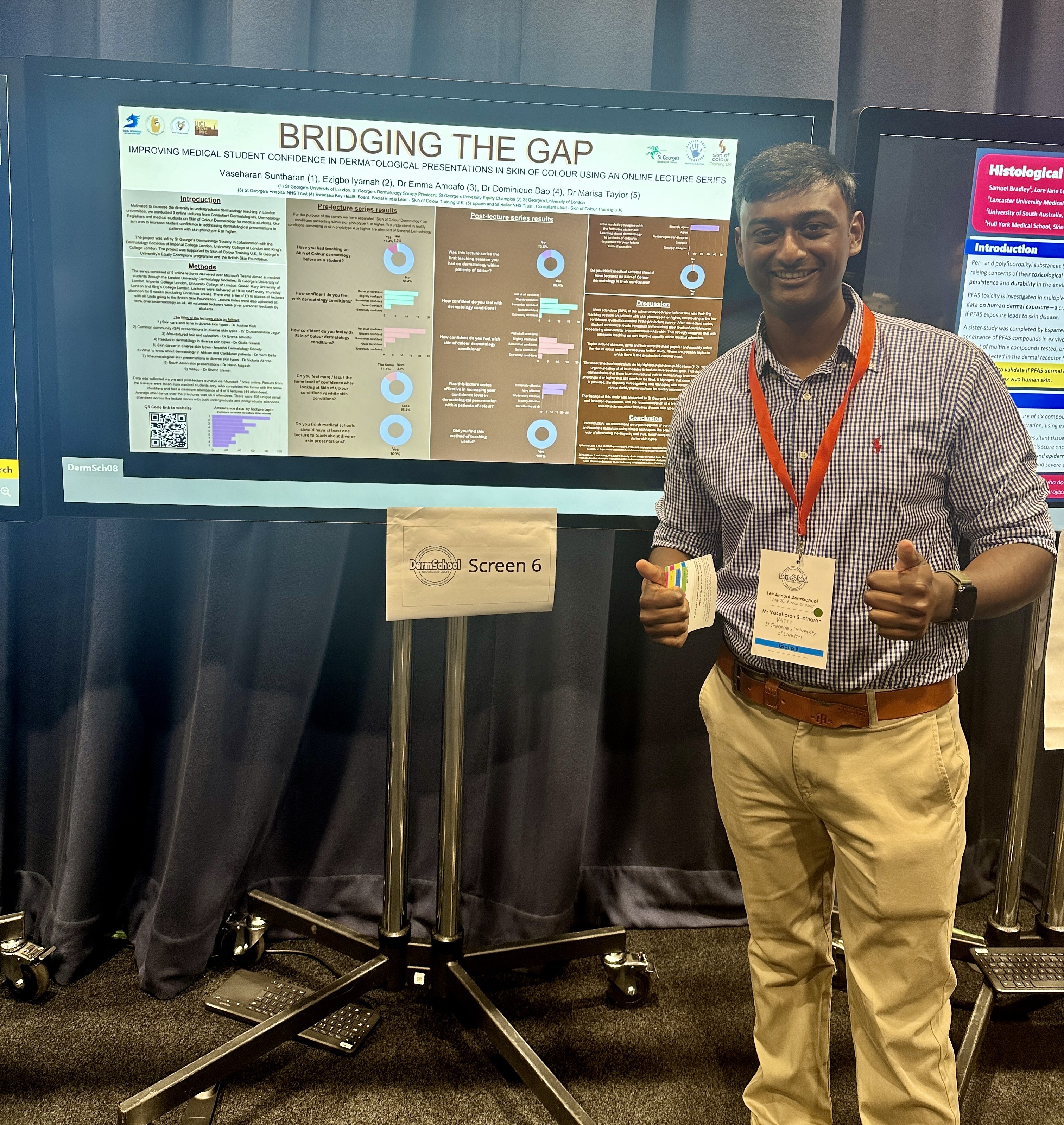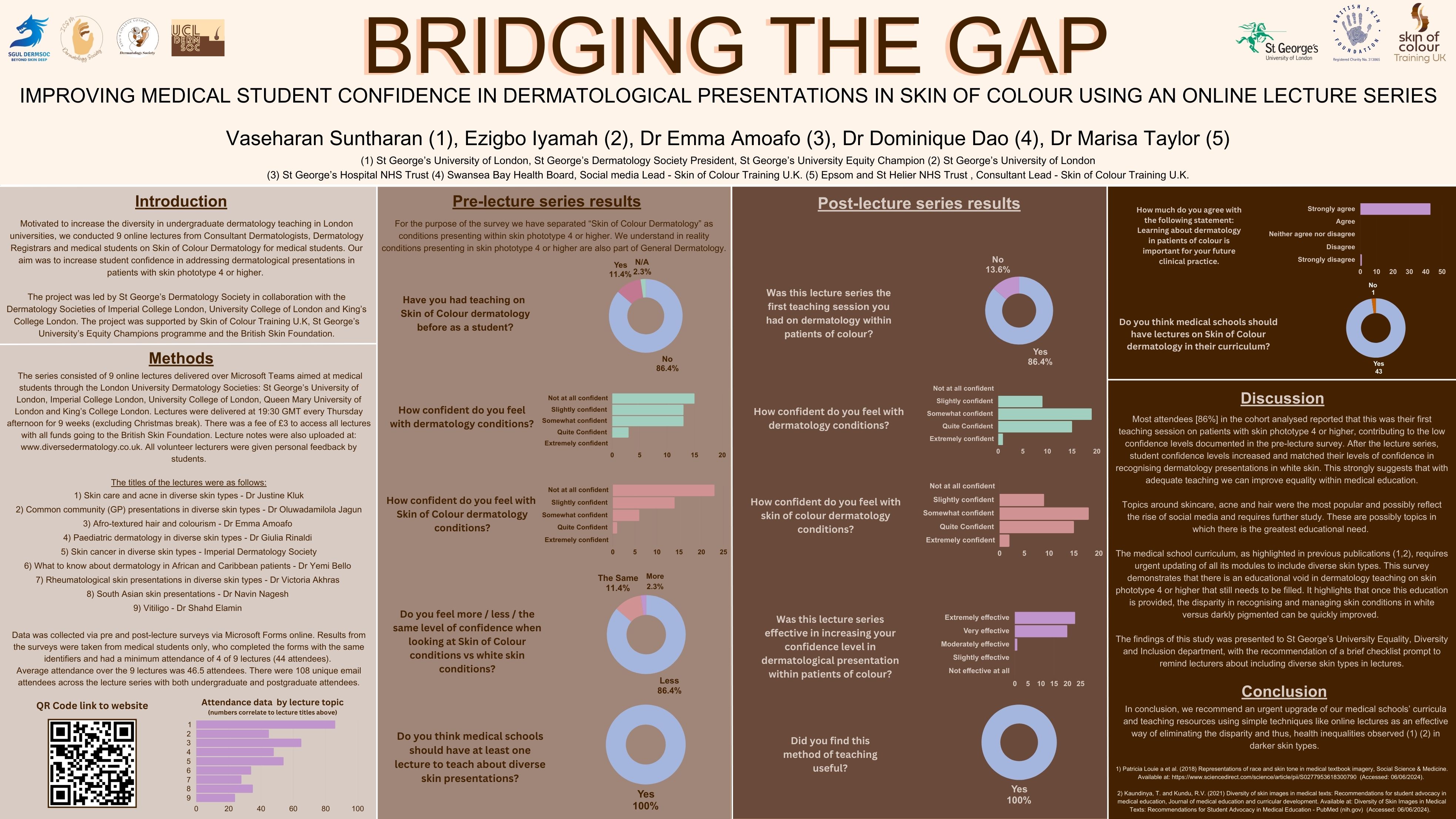Vassy Suntharan, Equity Champion and Final Year Medical student had been heartbroken to see a lack of clinical images on Black and brown skin in his Year 4 lectures. He talked about this with colleagues from other universities who were experiencing the same issues. The discussions evolved into the creation of a Skin of Colour Lecture series – a collaboration to proactively address this. Vassy recently took part in British Association of Dermatologists (BAD) Annual meeting to present a poster on Skins of Colour Lecture series.

Speaking of the experience, Vassy said:
“Presenting our Skin of Colour lecture series was a moment of great pride. We received overwhelmingly positive feedback and strong support from fellow students and senior colleagues alike. It was enlightening to engage with medical students from across the country and discuss their perspectives on diversity in teaching.”
During the conference, many highlighted inclusive education initiatives at their institutions but noted limited exposure to skin phototypes 4 and beyond during clinical placements.
This underscores the importance of inclusive health and science education, laying the foundation for students' future practices.
Vassy also presented the idea of providing prompts to lecturers was well-received by colleagues, who also expressed interest in conducting an audit to assess its effectiveness in enhancing teaching.
Vassy’s work builds on Mind the Gap. Designed as part of a student-staff partnership project, Mind the Gap was created by medical student, Malone Mukwende, Senior Lecturer in Diversity and Medical Education, Margot Turner, and Clinical Lecturer in Clinical Skills, Dr Peter Tamony. The booklet can now be downloaded as an ebook on the Black and Brown Skin website, created separately by Malone.

A key consideration is continuing to find ways to work with placement partners and staff to ensure that all identities are reflected in the curriculum to not only ensure that students see themselves reflected in the curriculum, but also to find a way to address persistent health inequalities in society.